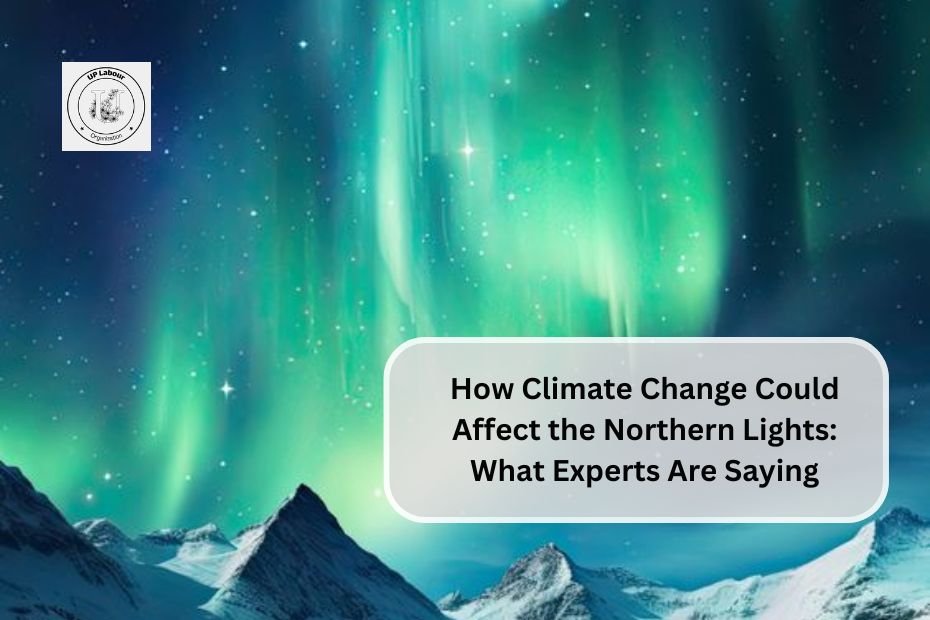Climate change is a pressing global issue, impacting various natural phenomena, including the Northern Lights, or aurora borealis. This captivating display of lights in the polar regions results from interactions between solar particles and Earth’s atmosphere. While the Northern Lights themselves are primarily driven by solar activity, climate change can influence their visibility and intensity in several indirect ways.
Understanding the Northern Lights
The Northern Lights occur when charged particles from the sun collide with gases in Earth’s upper atmosphere, producing vibrant colors such as green, pink, and red. These interactions are most visible near the poles due to Earth’s magnetic field, which channels solar particles towards these regions. The phenomenon is closely linked to solar activity, particularly sunspots, which follow an approximately 11-year cycle. During periods of high sunspot activity, the likelihood of witnessing the Northern Lights increases significantly.
The Role of Climate Change
Indirect Effects on Visibility
While climate change does not directly alter the mechanics of how Northern Lights form, it can affect atmospheric conditions that influence their visibility. Increased greenhouse gas emissions lead to changes in weather patterns and cloud formation. For instance, as global temperatures rise, precipitation intensity may increase, resulting in more frequent and intense storms. These storms can create cloud cover that obscures the sky, making it more challenging to see the auroras.Dr. Helgi Rafn Hróðmarsson, a physical chemist, points out that while long-term climate change will not affect the fundamental processes behind auroras, it may lead to more clouds that block views of these light displays. Therefore, while the lights themselves remain unchanged by human-induced climate change, our ability to observe them could diminish due to increased cloudiness.
Solar Activity and Climate Change
The relationship between solar activity and climate change is complex. Solar irradiance has shown a downward trend in recent decades; however, global temperatures continue to rise due to human activities. This divergence suggests that while solar factors play a role in climate dynamics, they are overshadowed by anthropogenic influences.As we approach the peak of the current solar cycle around July 2025, experts predict an increase in sunspot activity. This peak is expected to enhance Northern Light visibility across traditional viewing areas and potentially beyond. However, if climate change leads to more stormy weather and cloud cover during this time, it could counteract these benefits.
Changes in Geomagnetic Conditions
Climate change may also indirectly influence Earth’s geomagnetic field. Alterations in atmospheric conditions can affect how solar particles interact with this field. Some studies suggest that changes in the geomagnetic field could impact where and how intensely auroras are displayed. For example, a stronger geomagnetic field might allow for more pronounced auroras at lower latitudes during periods of high solar activity.Moreover, energetic particle precipitation associated with auroras has been linked to ozone depletion in the polar stratosphere. This depletion can intensify weather patterns like the polar vortex—an important factor influencing winter temperatures across northern regions. Thus, while climate change does not directly alter auroral displays, it can modify atmospheric dynamics that indirectly affect their characteristics.
Observing the Northern Lights Amidst Climate Change
For those hoping to witness the Northern Lights, understanding these dynamics is crucial. The interplay between solar cycles and climate conditions means that timing and location are essential for successful viewing. As storm patterns become more unpredictable due to climate change, planning trips for optimal viewing conditions will require careful monitoring of weather forecasts and solar activity reports.Fortunately, advancements in forecasting technology provide valuable information about cloud cover and auroral activity. Websites and apps dedicated to tracking auroras offer real-time updates on conditions conducive to viewing these spectacular lights. By leveraging this information, enthusiasts can maximize their chances of experiencing one of nature’s most awe-inspiring phenomena.
Conclusion
In summary, while climate change does not directly impact the formation of the Northern Lights, its effects on atmospheric conditions can significantly influence their visibility. Increased cloud cover resulting from intensified storms poses a challenge for those seeking to witness this natural wonder. As we continue to navigate the complexities of climate change and its myriad effects on our planet’s systems, understanding these relationships will be key in preserving our ability to enjoy such breathtaking displays for generations to come.

